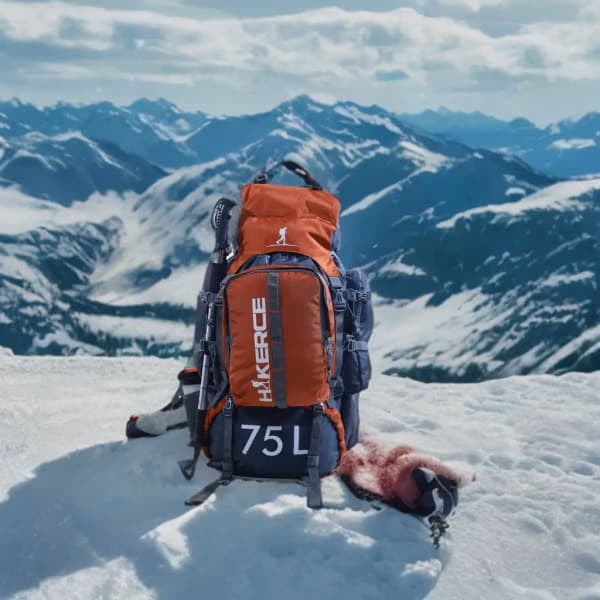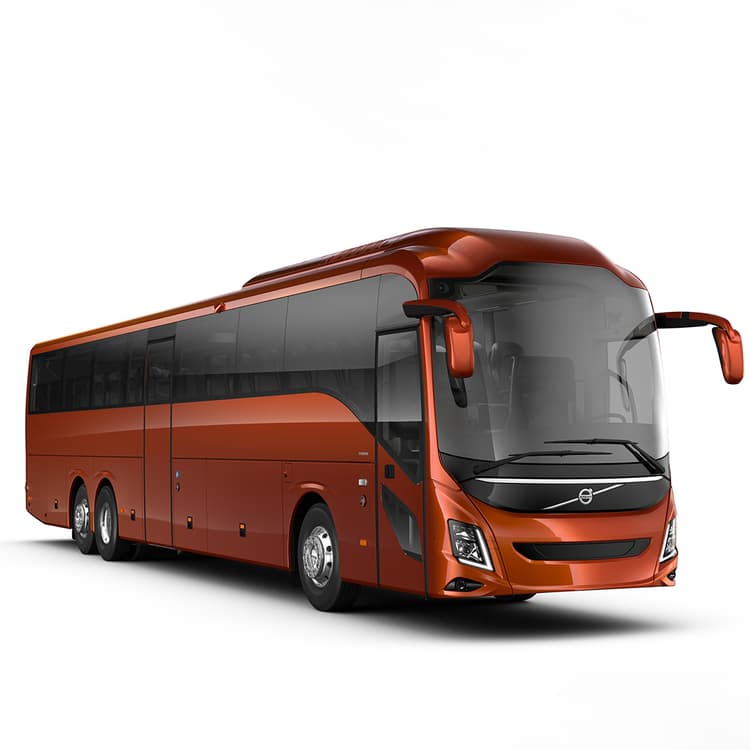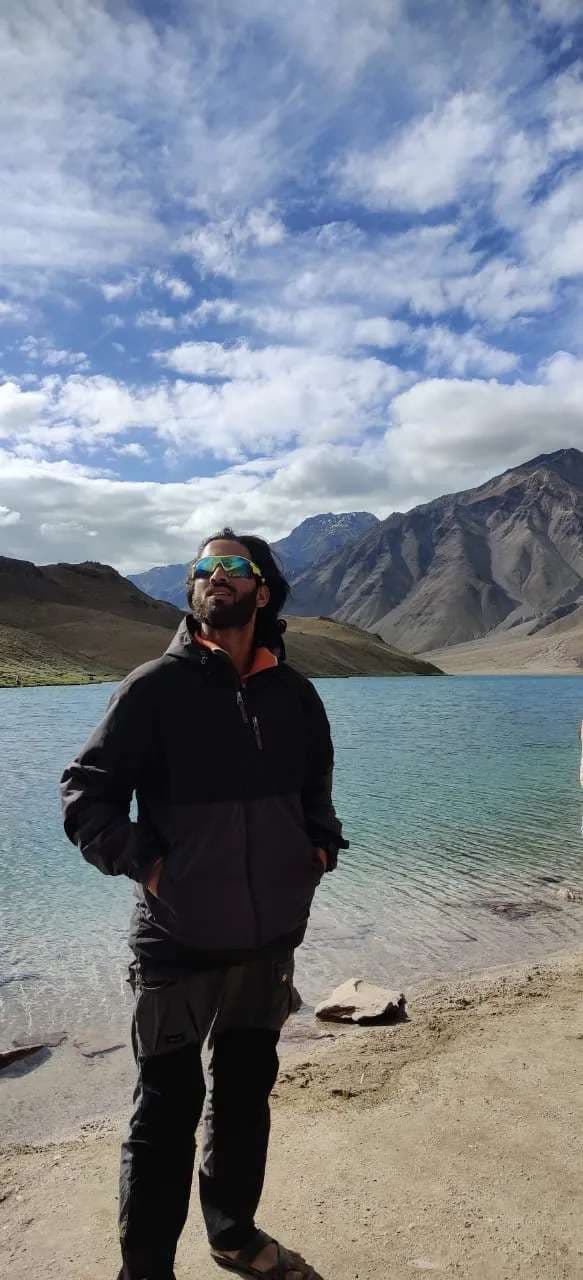Hampta Pass Trek, located in the Kullu region of Himachal Pradesh, is situated at an altitude of 14,100 feet in the Pir Panjal range of the Himalayas. The diversity of the Hampta Pass trek lies in its route. You get to see the lush green pastures of Kullu, the peaceful charm of the Lahaul Valley, snow-capped peaks and beautiful lakes, along with colourful sunrises and sunsets, and the splendid Chandratal Lake all together in one package. This trek offers two different sides of the Himalayas: one side is the lush green Kullu Valley, and the other side is the desert Lahaul Valley. The views from here are spectacular during any season of the year, especially during the monsoon.
Manali is the starting point of the Hampta Pass trek, and it offers different varieties of landscapes along the pass. The other stunning places during the Hampta Pass trek, like Jobra, Chika, Balu Ka Ghera, Shia Goru, and Chhatru, are part of this route that connects the Manali Valley to Spiti Valley. Hampta Pass is a complete package with the number of changes and scenic views that the trail has to offer. It is called the "Gateway of Heaven" by the locals. The challenge comes when we climb to Chandratal Lake. Chandratal Lake is another level of beauty in the Spiti Region.
If you’re looking for a trekking peak with picturesque views, go nowhere but Hampta Pass Trekking. At just around 14,100 feet, it’s considered a minor pass in India—but it doesn’t stop anyone from enjoying its stunning beauty. The Hampta Pass trek distance is around 25 km, while the Manali to Hampta Pass distance is around 50 km.
Best time for Hampta Pass Trek
Hampta Pass Trek is a popular trekking destination in the Indian state of Himachal Pradesh. The trek offers a picturesque view of the Himalayan range and perfectly blends adventure and natural beauty. However, choosing the right time to do the trek is crucial to making the most of the experience. The best time to do the Hampta Pass trek and the factors that make each season unique.
The weather conditions during the Hampta Pass trek are crucial in determining the best time to do the trek. The ideal trek time is between June and September when the weather is pleasant and mostly dry. However, the monsoon season (July–August) brings heavy rainfall and landslides, making the trek difficult and risky. On the other hand, the winter season (October–May) brings extreme cold and snow, making the trek inaccessible. Therefore, it is advisable to avoid these seasons to ensure a safe and enjoyable trek.
How to reach Manali
Manali is famous as a tourist place in India. It is well connected with the other states of India through different modes of transportation. Here we mentioned it:
1) By Air: Bhuntar Airport is the nearest airport to Manali, is located at a distance of 50 km from Manali and is the nearest domestic airport to Manali. There are regular flights from Delhi and Chandigarh to Manali. You get cabs or taxis from the airport, which take you to Manali in a 2-hour drive. The nearest international airport to Manali for international tourists is Indira Gandhi International Airport in Delhi, from which you can then opt for another flight from Delhi to Kullu-Manali airport and reach Manali.
2) By Train: Pathankot and Joginder Nagar railway stations are the nearest railway stations to Manali, as Manali does not have any railway station of its own. From here, you can reach Manali by cab, taxi, or bus; it takes 4-5 hours. By coming to Chandigarh Railway Station and Delhi Railway Station, you can also take buses to Manali, which connects Jaipur, Indore, Kolkata, Madurai, Lucknow, and many other cities. The journey from the station to Manali will be around 12 to 14 hours.
3) By Road: Manali is directly connected to Chandigarh, Ambala, and Delhi by road. Volvo buses are available from Kashmere Gate; Majnu Ka Tila and RK Ashram in Delhi; and Himachal Pradesh government buses are available from Kashmere Gate. Manali is also connected to other states by road.
The difficulty level of the Hampta Pass Trek with Chandratal Lake
Hampta Pass Trek offers stunning views of snow-capped mountains, lush green valleys, and serene landscapes. However, the trek is not for the faint-hearted, and it requires physical fitness, endurance, and preparation to complete successfully. The difficulty level of the Hampta Pass Trek, its physical challenges, and safety precautions to be taken during the trek.
The Hampta Pass Trek is a moderate-to-difficult-level trek with an altitude of 4,270 meters above sea level. The trek covers a distance of 26 kilometres, which takes around 5 days to complete. The terrain of the trek is diverse, ranging from rocky ridges, steep ascents and descents, and narrow paths. The weather conditions can be unpredictable, with sudden rain and snowfall and low temperatures at night.
Several factors make the Hampta Pass Trek challenging. The steep ascents and descents, rocky terrain, and unpredictable weather can test the endurance and stamina of even the most experienced trekkers. Physical fitness is crucial for completing the trek, and regular exercise, such as cardio and strength training, can help prepare the body for the physical demands of the trek. Acclimatization is also essential, as the high altitude can cause altitude sickness, which can be life-threatening. Proper gear, such as sturdy trekking shoes, warm clothing, and a backpack, is necessary for the trek.
Things to carry for the Hampta Pass Trek with Chandratal Lake
The Hampta Pass Trek with Chandratal Lake
is one of the most popular treks in the Indian Himalayas, attracting thousands of adventure seekers every year. Trekkers need a proper list to carry essential things they will use during the trek. Here is the list to carry things for the trek:
Back Pack (55 L to 65 L)
Warm clothes (4-5 layers)
4-5 pairs of socks
1 pair gloves
1 warm jacket
1 Pair of Warm Caps
Hiking Shoes
Raincoat or Poncho
Toilet Papers
Water Bottle (thermal water for the snow trek)
Snacks like dry fruits, energy bars, candies, etc.
Power bank or charger
Sunscreen, lip guard, or moisturizer
Torch
One valid ID is proof
Tiffin Box
How to prepare for the Hampta Pass Trek with Chandratal Lake
Physical preparation is crucial for any trekking adventure, especially a challenging one like the Hampta Pass Trek. The trek involves hiking through rough terrain, steep ascents and descents, and Hampta Pass at high altitude, which can be physically demanding. Therefore, it is essential to build your stamina and endurance, strengthen your muscles, and practice hiking with a loaded backpack. Cardiovascular exercises like running, cycling, or swimming can help improve your stamina and endurance. Strength training exercises like squats, lunges, and deadlifts can help build your leg muscles, which are essential for hiking.
Safety considerations during the Hampta Pass Trek with Chandratal Lake
Hampta Pass is known for its stunning views of the surrounding mountains, valleys, and glaciers. However, trekking in the Himalayas can be dangerous, and safety is a top priority for trekkers and guides alike. Safety Factors for Hampta Pass Trek, including weather conditions and terrain safety, food and water safety, and group and individual safety considerations.
One of the most significant safety factors to consider during the Hampta Pass Trek is weather conditions and terrain safety. The Himalayas are known for their unpredictable weather patterns, which can range from clear, sunny skies to heavy snowfall and blizzards. Trekkers must be prepared for all types of weather conditions and be equipped with appropriate gear, such as warm clothing, waterproof jackets, and sturdy trekking boots. Additionally, the terrain of the trek is challenging and rugged, with steep ascents and descents, rocky paths, and narrow trails.


















































